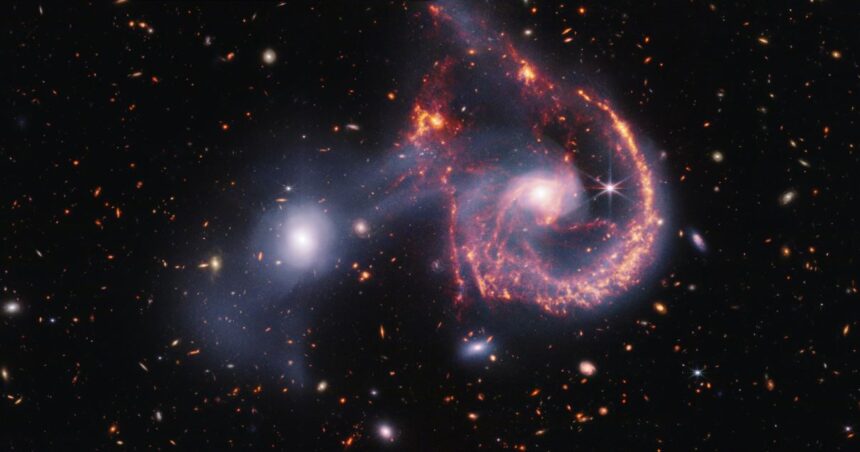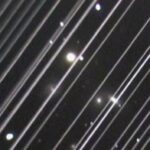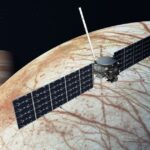the James Webb Space Telescope (JWST) captured an extraordinary event in space. It witnessed a galactic collision that appeared to be smiling. This unique sight has amazed astronomers and space enthusiasts alike.
The James Webb Space Telescope is known for its powerful imaging capabilities. It has provided us with stunning views of the universe. This time, it captured a collision between two galaxies, collectively known as Arp 107. These galaxies are located about 465 million light-years away from Earth in the constellation Leo Minor.
The Smiling Collision
The collision involves a large spiral galaxy and a smaller elliptical galaxy. When these galaxies collided, they created a structure that looks like a smiling face. The spiral galaxy forms the “eyes” and the elliptical galaxy forms the “mouth.” This cheerful appearance has earned it the nickname “Smiling Collision.”
The JWST used its Near Infrared Camera (NIRCam) and Mid InfraRed Instrument (MIRI) to capture this image. These instruments revealed a bridge of stars and gas connecting the two galaxies. This bridge is a result of the gravitational forces at play during the collision.
Star Formation and Black Holes
The collision has triggered new star formation in the region. The JWST’s instruments detected regions of gas and dust where new stars are being born. These regions are shown in orange and red in the image. The spiral galaxy in this collision is classified as a Seyfert galaxy. Seyfert galaxies are known for their active nuclei, which emit large amounts of energy. This energy is often due to supermassive black holes at their centers.
This discovery is significant for several reasons. First, it provides insight into the process of galactic collisions. These collisions are a common occurrence in the universe. They play a crucial role in the evolution of galaxies. By studying these events, astronomers can learn more about how galaxies form and evolve over time.
Second, the image captured by the JWST is a testament to its capabilities. The telescope was launched to replace the Hubble Space Telescope. It has already provided us with breathtaking images of the cosmos. This latest image adds to its growing list of achievements.
The James Webb Space Telescope will continue to observe the universe. It will provide us with more detailed images and data. These observations will help astronomers understand the universe better. The study of galactic collisions, like the one captured in Arp 107, will be a key area of focus.




